Historic Home of the Month: 154 W 5th St in Historic Springfield
May 8, 2025 | amandasearlerealtor
The Roy M. Ingersoll House, ca 1897
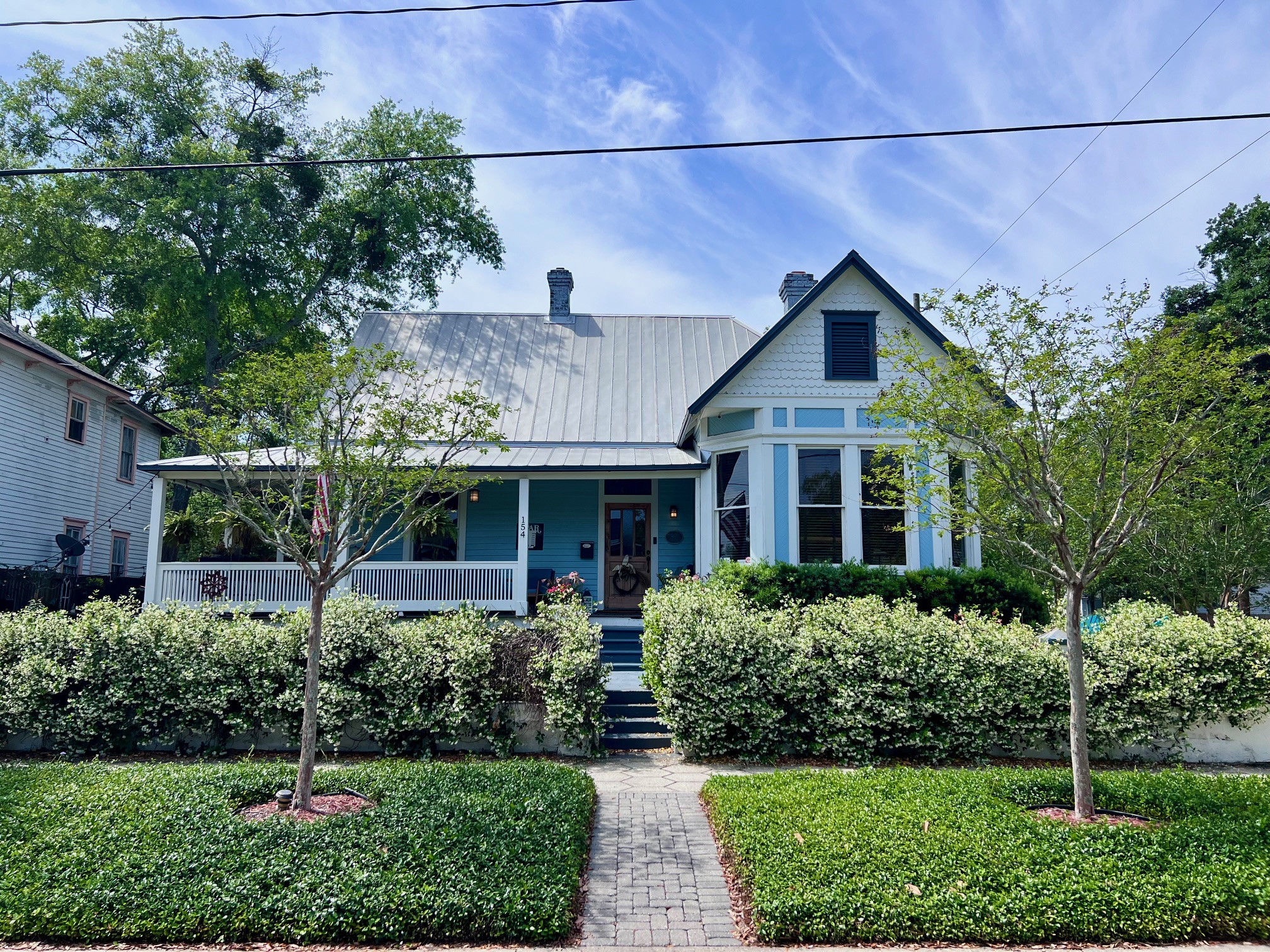
About the Home’s History
Can you tell us the story behind this home’s fascinating past—especially the embezzlement tale I’ve heard whispers about?
The first owner of the house was a man called Roy M. Ingersoll. By the 1900 census, he was found to be living in the home with his wife, their three children, his widowed sister-in-law, her two sons, and his widowed mother-in-law. That’s a lot of people living in a 1556 square foot house! A little online searching found that Mr. Ingersoll was in legal trouble with his employer in Tennessee. In the 1903 Legal Judgement The Model Mill Company vs. Fidelity Deposit Company of Maryland, the Tennessee Court of Chancery Appeals indicated that during the period of 1895-1899, R.M. Ingersoll committed fraud and embezzlement. He apparently kept two sets of books documenting his business as agent to Model Mill Company, operating a warehouse and selling flour in Jacksonville. Documents indicate that he may have stolen as much as $8,973.74 (approximately $297k today). If he was skimming this money from the period of 1895-1899, and the house was finished circa 1897, it stands to reason that the house may have been built with ill-gotten gains!
How did you first learn about the home’s history? Was it something that drew you to it or did it come as a surprise after purchase?
Oh, it definitely came as a surprise! When we first moved into the home in 2014, we believed it was built in 1906 based on the COJ Property Appraiser’s website. The next year, we agreed to be featured on the SPAR Spring Tour of Homes. That’s when we first met Springfield Historian Chris Farley, who had volunteered to be a docent at the house for the tour. She kept looking up at our porch ceilings and muttering, “I know this house is older than 1906!” Our porch has a wide overhang and open rafter like ceiling, as opposed to being finished with wainscoting. She later went on to find the house on the 1903 Sanborn map, and then took out the 1903 city directory, pouring over it line by line, until she got to “I” and found the Ingersoll living at 154 W. 5th Street. She was able to then work backwards to find him listed at the corner of 5th and Hogan in 1901, back at W. 5th in 1900, and the southwest corner of Hogan and 5th in 1899. In the 1890’s the city had not yet decided whether to call it Silver Street or Hogan. I think we have actually lost houses over the issue. So, the house predates the fire and is part of the collection of the oldest houses in Springfield. Once Chris learned of all of this, she then enlisted fellow historian Jeff Gardner, who dug up the tale of Ingersoll’s embezzlement.
Buying the Property
What made you decide to purchase a historic home, and what stood out to you about this one in particular?
We have both always loved historic homes. My family is from England, and my brother likes to remind me that his house across the pond is older than my country. My father-in-law was a fellow at Taliesin under Frank Lloyd Wright. So, I guess we come by a love of historic architecture honestly.
We rented the house initially from Michael Trautmann for two years prior to talking him into selling it to us. We were moving from San Marco at the time and wanted to be sure Springfield was right for us before buying. When we first pulled up out front, we were quickly drawn to the character. Then we opened the front door and were immediately greeted by a large two-sided brick fireplace. I didn’t need to see the rest of the house at that point. I was in love.
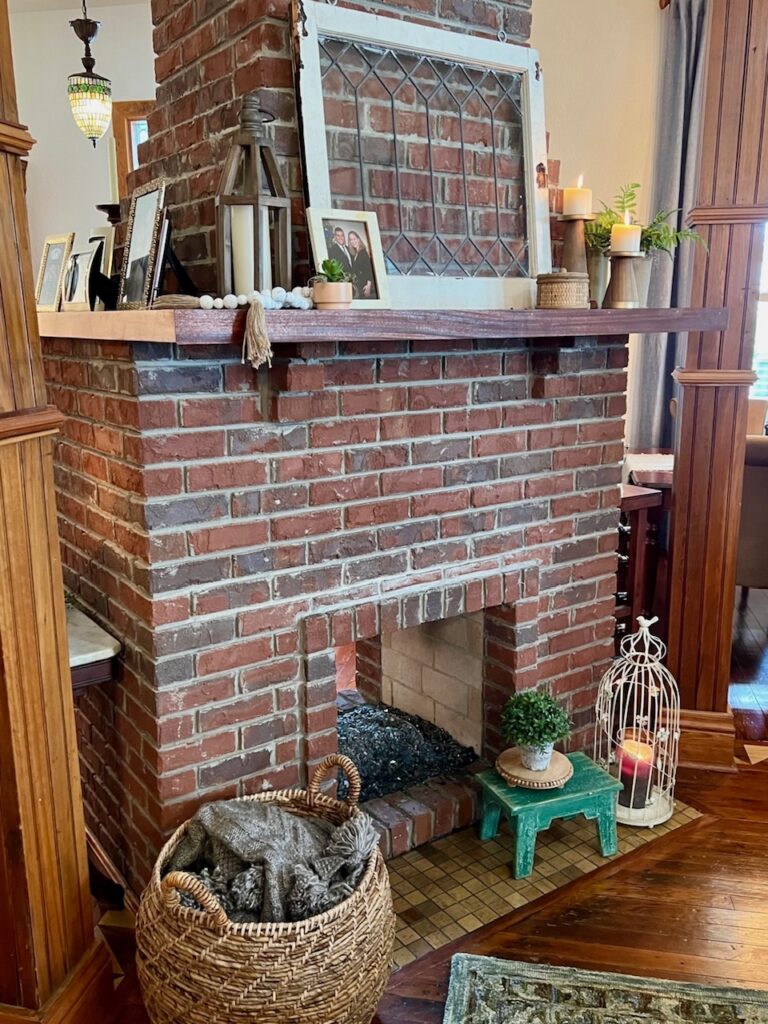
What made you decide to purchase a historic home, and what stood out to you about this one in particular?
We have both always loved historic homes. My family is from England, and my brother likes to remind me that his house across the pond is older than my country. My father-in-law was a fellow at Taliesin under Frank Lloyd Wright. So, I guess we come by a love of historic architecture honestly.
We rented the house initially from Michael Trautmann for two years prior to talking him into selling it to us. We were moving from San Marco at the time and wanted to be sure Springfield was right for us before buying. When we first pulled up out front, we were quickly drawn to the character. Then we opened the front door and were immediately greeted by a large two-sided brick fireplace. I didn’t need to see the rest of the house at that point. I was in love.
Was there anything about purchasing in the Springfield Historic District that attracted you as opposed to Jacksonville’ other historic districts?
At the time – the price. Our rent that first year was $1,200/month. We ultimately paid $200,000 for the house in 2016.
Restoration & Renovation
What condition was the home in when you purchased it, and what was your initial vision for the renovation?
The home had been completely and lovingly restored by Michael Trautmann.

What work have you done since you purchased it?
We completely transformed the yard in 2020-2021. We ripped out every blade of grass and replaced it with paved walkways and landscaping.
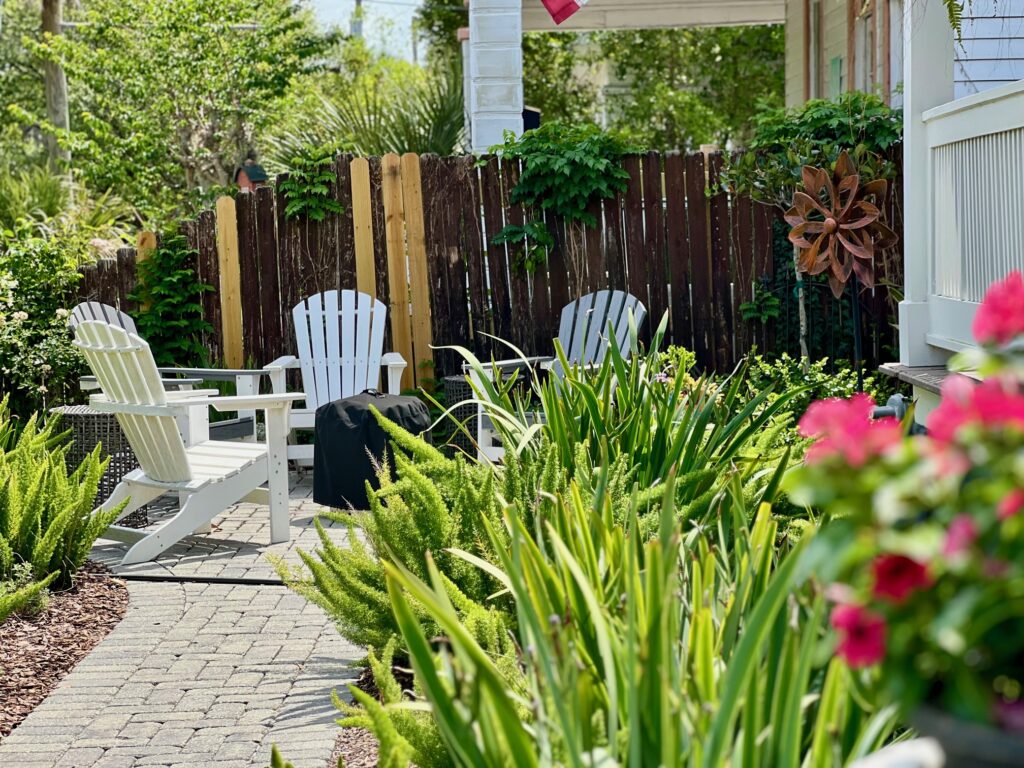
Looking to the west from the front.
View to the east from the front.
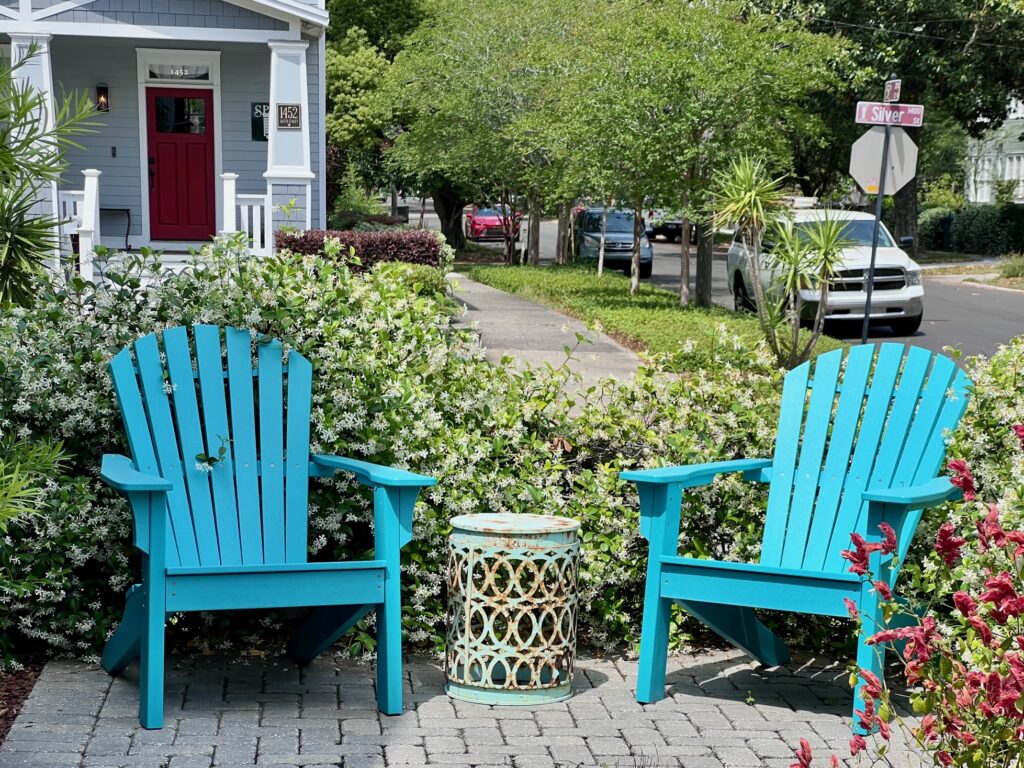
Were you required to follow specific preservation guidelines or seek approvals before making changes?
Yes, since the pavers were in front of the front plane of the house we had to get COA approval. They gave us six options for paver colors – five of which were some variation of red, and one was grey. We went with grey to better match the color of the house. The pavers also had to be a “brick shape.” We were able to submit a sketch of the plans with photos of the yard and received administrative approval.
What has been the most rewarding—and most difficult—part of owning a historic home?
Most rewarding: Being able to host home tours – we have been on two now – is so rewarding. It is an opportunity to showcase the neighborhood that we absolutely love. Also, the countless times passersby have said “we love your house!” or, “your house is my favorite!” makes it so rewarding. It could have been lost along the way like many of our historic structures were. But this old gal survived and now we get to be her caretaker.
Most difficult: Old houses made of wood take a lot of maintenance. It is a constant battle against the elements. Humidity and termites are not our friends!
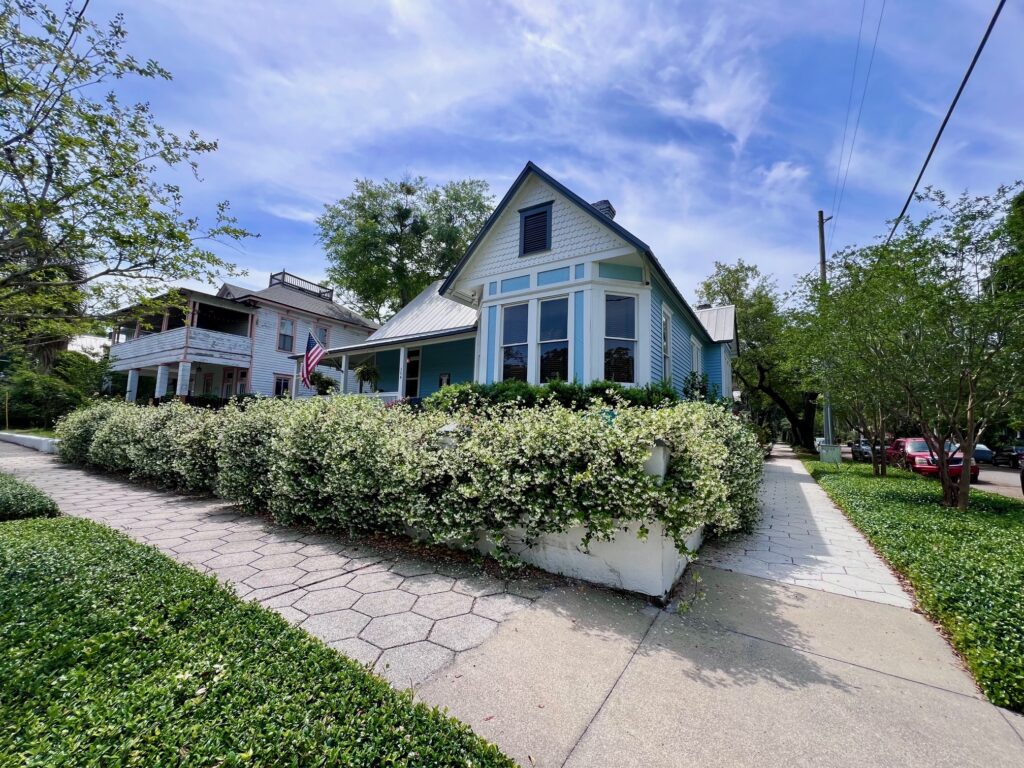
Navigating Regulations
Are there any restrictions that current or future homeowners should be aware of when buying in a designated historic property in this area?
Understand that you need permission to do anything outside but paint. Even if it seems innocuous. Do it right or pay the price. Also be very, very wary of buying from a flipper. We have all heard the horror stories of some realtor from Ponte Vedra “renovating” a Springfield house by removing critical structural elements.
What advice would you give to someone who’s thinking about buying and renovating a historic home for the first time?
Make sure you have way more time and money than you think you need. Do things the right way and follow the rules.
Living in a Home with a Past
Has living in a home with such an infamous tale changed how you think about your space?
Not really, but I will share one other tale. Silent film star Marguerite Gilmore lived in our house in 1918. The rumor was that she kept her booze in the cellar under the house. I really, really want to restore the cellar access from inside the house and hide my booze down there, too!
Do you embrace the scandalous part of the story, or have you tried to reshape the home’s narrative?
Not at all – you have to embrace the histories of our old homes.
Have you had any fun or eerie experiences in the house that make you wonder what the walls would say if they could talk?
No, but I am often asked if the house is haunted! Neighbor Drew Hunter assures me that our house has good vibes only and I trust his perception.
Final Thoughts
What’s your favorite detail or feature of the home now?
One thing I love about old homes is the use of windows. We have a lovely bay window in the front of the house that brings so much light to my home office. We have 4 pieces of beautiful stained glass. Many of our windows have the original wavy glass. They certainly aren’t energy efficient, but they do add character.
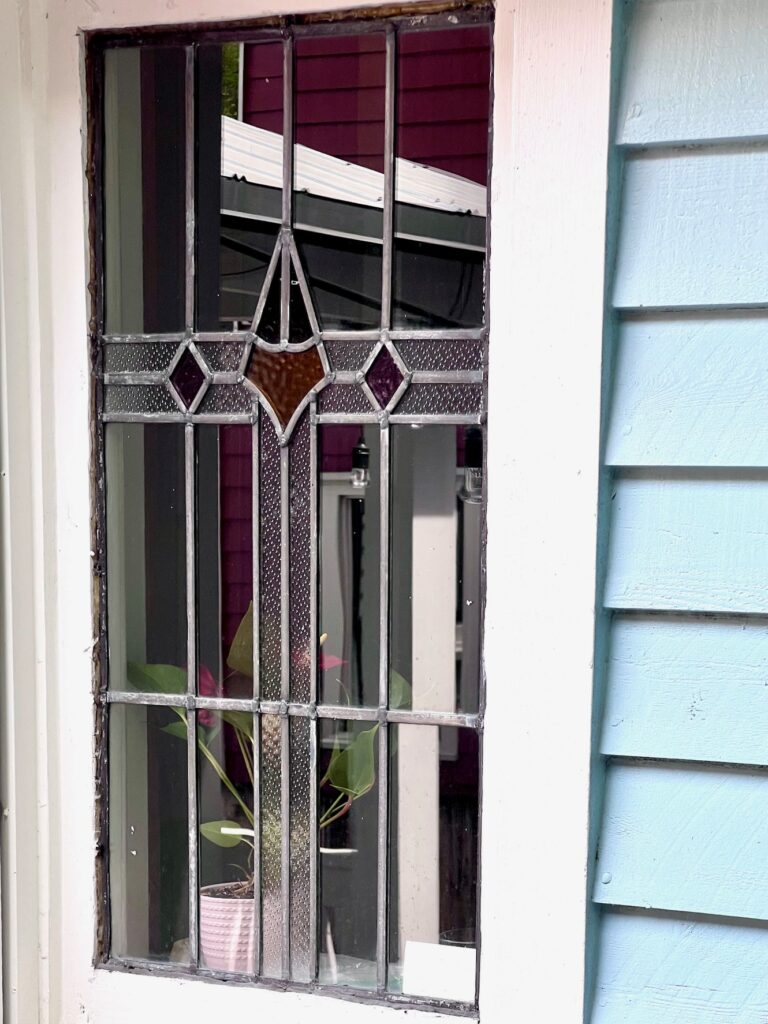
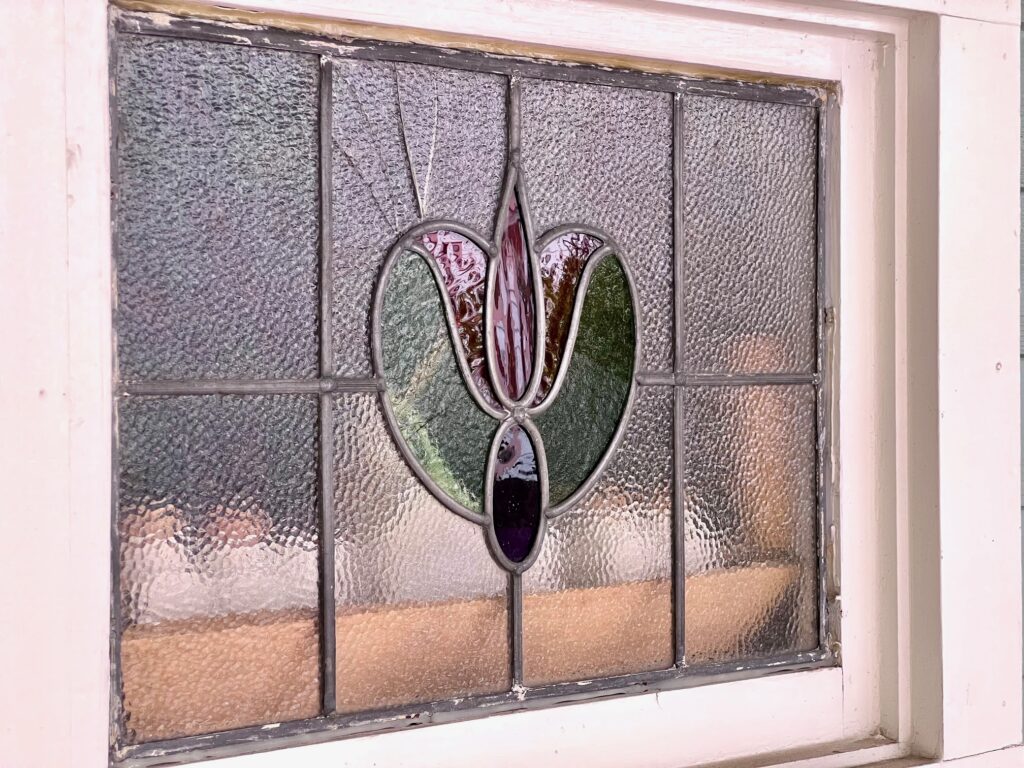
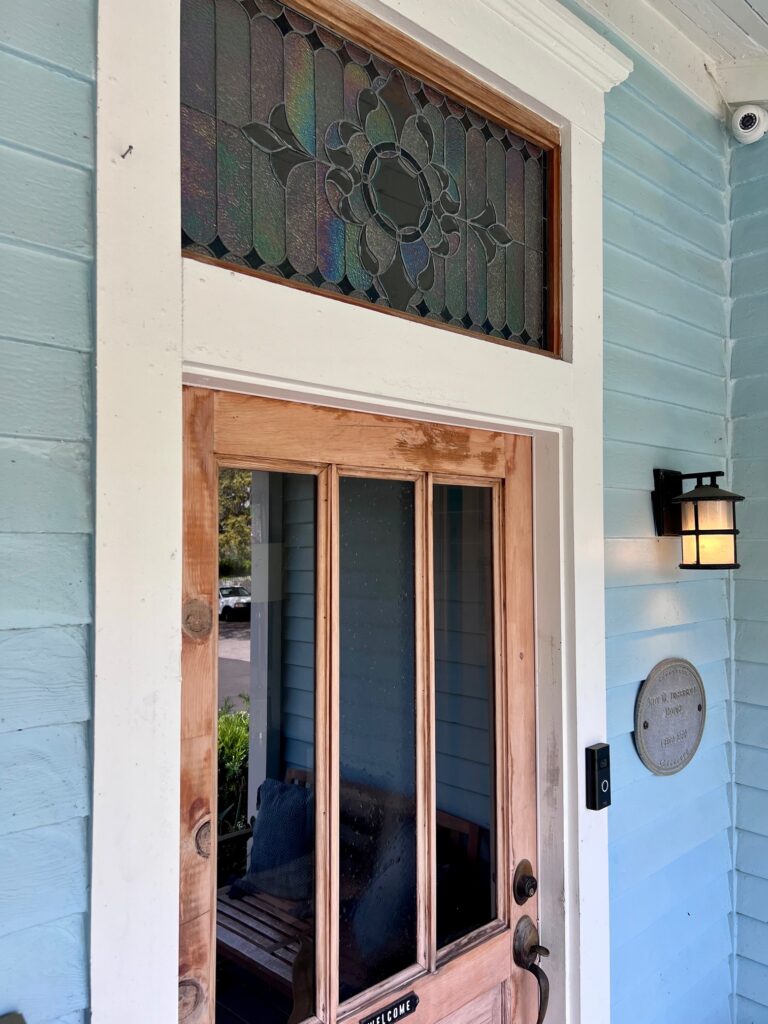
How do guests react when they hear the story behind your home?
Mostly people are just impressed that we have knowledge of the history. That is 100% thanks to Chris Farley and Jeff Gardner. Without them, we would never have known.
If the original owners could see the house today, what do you think they’d say?
I think they would be impressed with the adaptations made to the floor plan. Our original kitchen was in the back of the house and is now a huge primary bathroom. The original dining room is now the primary bedroom. The sleeping porch was enclosed to make a kitchen and second bath. We have a completely open floor plan now, but it doesn’t feel unnatural at all.
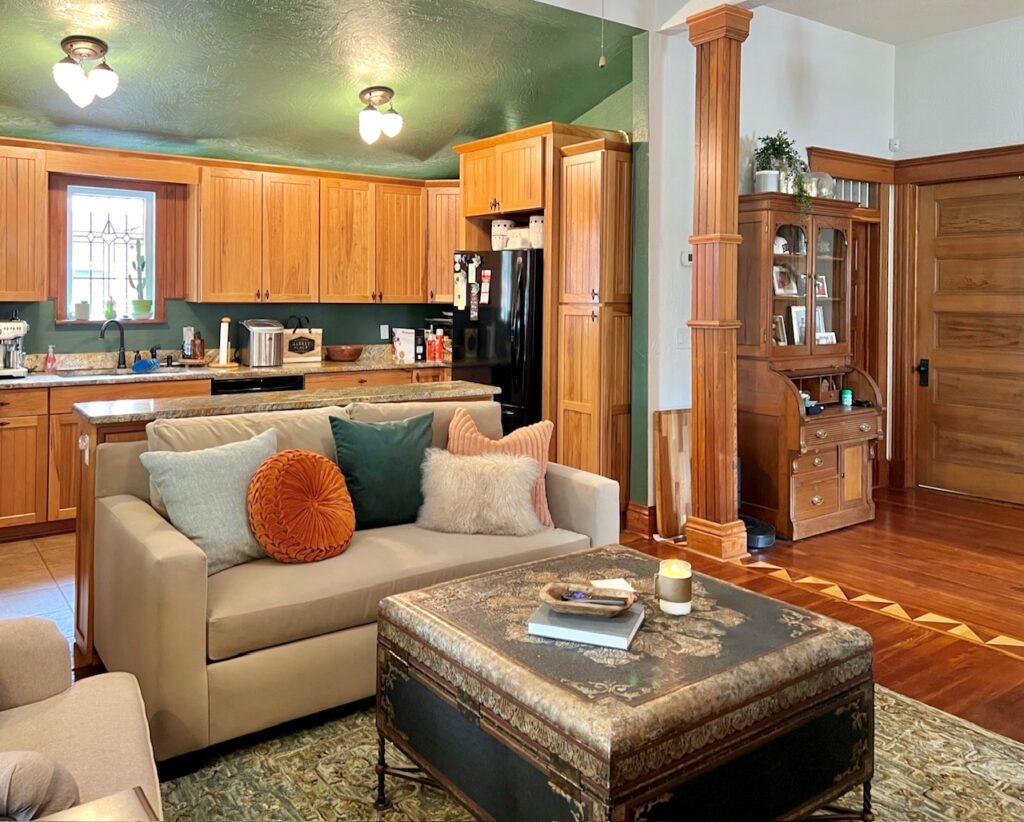
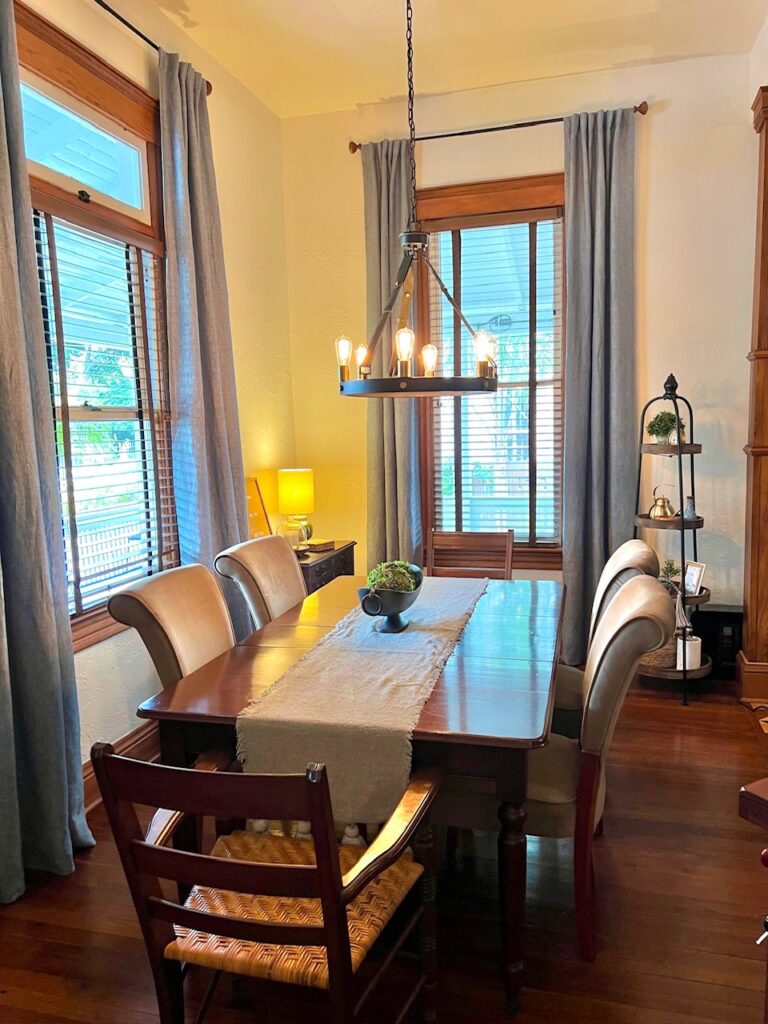
What’s next for the home—any upcoming projects, events, or stories left to uncover?
We could sure use a new fence!


